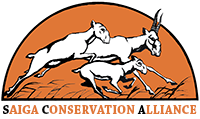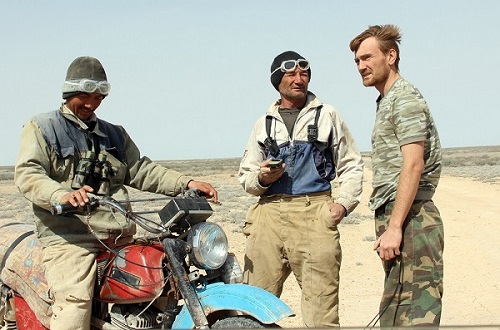*Saiga horns are also known as ling yang (羚羊) and used in Traditional Chinese Medicine
Konstantin Savitsky is 48 years old and lives in the village of Kubla, in the remote north east region of the Ustyurt plateau in Uzbekistan, he used to poach the critically endangered saiga antelope, but now works with the Saiga Conservation Alliance to help protect them. We spoke to Konstantin to understand why he became a poacher and what happened to change his mind and help him decide to work to save saigas.
When did you start poaching saiga?
I came to the Ustyurt region in 1989 for my job. At that time my friends and I hunted saigas for fun. It was a sport, we never sold them and used the meat for our families.
Why did you become a poacher?
After the collapse of the Soviet Union in 1991 like many other people, I lost my job and at the same time foreign traders told us they were looking to buy saiga horns. There was no work anywhere and we all needed to feed our families, we didn’t know what else to do. So we began to hunt the horned saigas for money. After a while it became difficult to find saiga, so I had to collect horns which I found on the steppe.
When did you stop saiga poaching and why?
I stopped hunting saigas several years ago, mainly because there are so few of them; it’s a very sad situation. I don’t even go to the saiga grounds any more. I still have problems finding work to support my family and life is very difficult. I have to hunt for food from time to time, but never for saigas. We go to the lakes to hunt ducks and wild pigs, we are supposed to have a licence to do this, but getting it is almost impossible as we’d have to travel a long way to apply, and anyway no one ever enforces it! Now I help the SCA which is really rewarding work.
What do you do for the SCA?
I became involved in monitoring saiga in 2011 and my friend Khamza and I conduct saiga population surveys by motorbike. We always follow a fixed route and log the coordinates using GPS when we find them. I’d like to continue saiga monitoring and involve more people in this activity, teaching them how use GPS and make correct records.
Do you have any interesting memories of saigas?
When I have arrived in the region in the 1980s there were lot of saigas. I remember groups of saigas arrived from the north soon after the first frosts in October. Sometimes in November and December, as soon as the really cold weather set-in and snow covered the whole steppe, huge groups of saigas would come close to my village. I remember the particularly snowy and cold winter of 1993; saigas came into my village, they came right up to our houses looking for shelter from the harsh winds, they even drank from our animal’s water troughs and ate their hay! Sadly, we hardly ever see saiga anymore, especially after the wire border wire fence was erected recently.
What needs to be done to protect saigas?
I believe it is necessary to improve anti-poaching activities. Inspectors really need to be given high-speed vehicles (racing motorcycles which can keep up with poachers, or good jeeps) that can stop poachers. I have heard about the new Saigachy reserve, I think it’s a very good idea to organise protected areas for saigas. I would be more than happy to work there as ranger if they had a job for me. My final suggestion is that training helping young men find work through teaching them new skills, and giving them a love for nature would really help stop them turning to poaching.
Featured image: SCA field assistant Dmitry and local monitors Konstantin and Khamza during saiga monitoring training from left to right. Khamza Jumaliev, Konstantin Savitsky and Dmitry Golovtsov.

